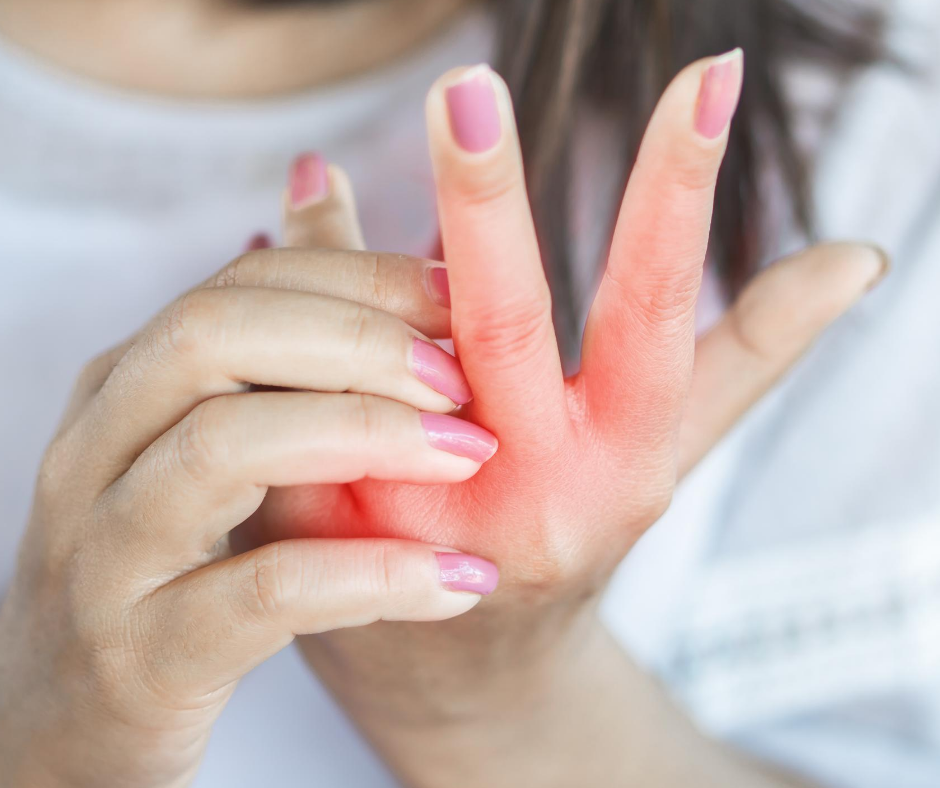
Scabies- contagious itchy skin rash
Scabies is thought to be one of the oldest recognised diseases. It is a very contagious itchy rash that has been around in humans for more than 2500 years. It is caused by a barely visible parasitic mite Sarcoptes scabiei, the Latin word Scabere means “to itch”. The mites are found in places frequented by lots of people, such as university or school dormitories, camps, classrooms and child-care centres.
Symptoms
A rash on the limbs and trunk which is intensely itchy is usually the most common symptom, which can be misdiagnosed as dermatitis. The overwhelming complaint of sufferers is described as “the itchiest thing they have ever had and it often disrupts sleep. The scabies rash develops several weeks (often 4 weeks) after infestation, unless the person has been infested before, in which case it may start within a few hours. The itchiness is the result of the infected person developing an allergic reaction to the mite’s eggs, faeces and saliva. The itch tends to worsen at night or after a hot bath or shower.
The Ministry of Health have information on this disease and treatments. This is an independent source of information so it is unbiased. Please see; www.healthed.govt.nz/resource/scabies
Diagnosis can be confirmed by the location of mite burrows, which look like a 5-10mm zigzag line and are most commonly found between the fingers or on wrists, although may be present in the armpits, buttocks, on the genitalia, insteps of the feet or backs of the heels. This may be difficult to see if excessive scratching, eczema or infection has set in. Scabies may also present with itchy lumps or nodules in the armpits and groin or along the shaft of the penis. These nodules usually persist for several weeks after successful eradication of the living mite.
Scabies rarely affects the face and scalp, but is more likely to do so in young babies and bed-bound elderly patients. Young children are also more likely to have blisters and pustules on their palms and soles.
Secondary bacterial infection of the rash resulting in crusted patches is common and requires referral to a doctor. Fit healthy people with scabies don’t usually become seriously unwell from an infection, although it is very unpleasant and disruptive. But the degree of scratching does pre-dispose to bacterial skin infections which can be serious in vulnerable people. Cellulitis (an infection of the deeper dermal layer of the skin) causing painful swelling, intense redness and fever can also occur with scabies and prompt medical treatment is warranted. Often this looks like blisters or infected spots.
Being infected by the scabies mite requires skin-to-skin contact with an infected person, and the contact need only be short-lived-for example holding hands. It can also be transmitted by sexual contact, and occasionally via bedding or furnishings, although this is a rarer mode of transmission than is commonly thought. Transmission of the mite is high even before the infected person starts itching.
Treatment
Because of the time delay between getting exposed to scabies and developing signs or symptoms, it is crucial to treat all family members including any sexual contacts on the same day. Treatment is with a scabicide (e.g. permethrin, malathion) which for adults is applied to the whole body from the chin and ears downwards. Most people will require help for the hard to reach areas such as their back. Permethrin products need to be left on for 8-14 hours, and malathion for 24 hours before washing off. This needs to be repeated in 7-10 days to prevent re-infestation. For some people, treatment will be required several times over a month before it is effective. Nailbrushes need to be used under the nails and careful attention is needed for finger and toe webs. In children aged 6 months-2 years, the face and scalp may need to be included.
The itchiness may continue for up to 4 weeks while people are being treated due to the continuing allergic reaction to the mite’s byproducts on the skin.
Crotamiton cream, oral antihistamines, 0.5% hydrocortisone cream, or emollients may be applied to relieve this itch. Any persisting itches lasting longer than 6 weeks needs to be re-examined by the doctor or pharmacist.
As well as treating the body, it is crucial that all bedding and clothing is “hot-washed” or hung out in the sun to kill any lingering mite. Items that can’t be washed can be placed in plastic bags for 72 hours with the same effect, and furnishings and carpets should be vacuumed.
Tips from the Pharmacist
- Follow carefully product instructions and ensure the product stays on the skin for required time before being washed off
- The whole body needs to be treated not just the itchy areas
- Reapply product to the hands if they are washed within the treatment time
- A second application may be given after at least 7 days
- Consider taking an anti-itch treatment for 4 weeks (see list above)
- Treat everyone at the same time even if they have no signs (all family members, friends, babysitters who have been in the house recently)
- If cost is an issue these treatments can be prescribed by the doctor and only incur the $5 prescription tax as per normal
- Wash bedding clothing, soft toys in hot water or seal in plastic bags
- Hang other bedding in the sun outside and thoroughly vacuum carpets and furniture.
